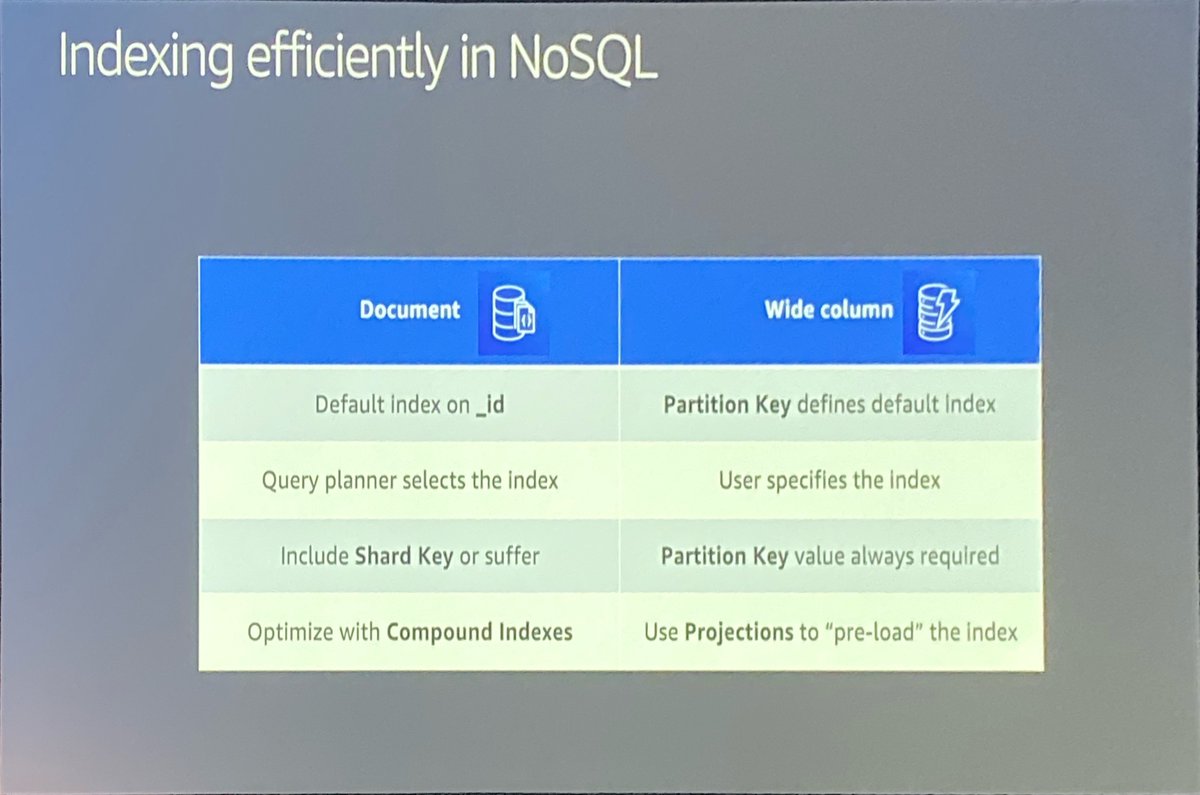
Very cool #reInvent session by @sliedigaws about building out distributed applications using different #EventBridge patterns. Let's recap this quickly to see how we can use them to build out our #serverless apps. 🧵 

The "single-bus, single-account" pattern is a super simple way to get started, especially if you have a small team. Create logical service boundaries and use a single event bus to decouple the services. This is one of my favorite ways to prototype #serverless applications. 

The "single-bus, multi-account" pattern is my go-to for larger apps, and works great for multi-team orgs w/ service-level ownership reqs. Create a *global* event bus, grant access to service accounts for putEvents, and forward events to service-owned buses for rules & routing. 👍 

I've never come across this "multi-bus, single account" pattern, but I can see where it could make sense. Major downside to this is that there requires a lot of collaboration between service teams. I prefer working with a centralized bus, but it does become a SPOF. 

The "multi-bus, multi-account" pattern is another head scratcher for me, but again, maybe it makes sense for some people. This seems like a massive pain to manage rules across service-level teams, and additional duplication of rules from Service A's bus to Service B's. 🤷♂️ 

There's a really interesting "feature" that I didn't realize existed, but also never thought to try. Receiver accounts will not forward messages to a 3rd account in order to avoid cross-account loops. Just think of your AWS bill if you got a message stuck in an infinite loop! 😬 

There are upsides and downsides to all of these patterns, and there's probably not a "right way" that would fit all use cases. The single bus, multi-account pattern is my favorite, but you need to be careful about just forwarding ALL events to every service & routing them there.
If you only have a few services, the cost is minimal, but cross account invocations are charged at $1 per million, so if you have lots of services, you might want to route them (or at least restrict to categories) at the shared bus level, and fine-grain them at the service level.
I find these discussions fascinating, so I'd love to know which pattern you prefer and why.
• • •
Missing some Tweet in this thread? You can try to
force a refresh





